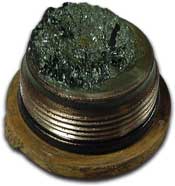Mobile equipment plays a crucial role in industries such as construction, mining, agriculture, and transportation, where maintaining peak performance is vital to maximize productivity and minimize downtime.
But a significant challenge lies in contamination control, impacting equipment reliability and longevity. In this blog, we will explore the significance of establishing a contamination control program and how it can be achieved through oil analysis and magnetic plug implementation. Intended for maintenance and reliability professionals, equipment operators, and anyone interested in equipment performance, this article provides valuable insights into the importance of contamination control for mobile equipment.

Project Initiation
Maintaining mobile equipment is challenging, especially in industries where machines often operate in harsh environments and are subjected to heavy loads. One company that faced significant challenges due to contamination was XYZ Corp. (a fictional company for illustration purposes). XYZ Corp. owned a fleet of heavy construction equipment, and their maintenance team needed help with frequent breakdowns and unscheduled maintenance, leading to high costs and reduced productivity.
To address these issues, XYZ Corp. initiated a contamination control project. The primary goal was identifying and mitigating equipment failures, such as dirt and debris ingress into critical components like hydraulic systems and gearboxes.

Analyzing Filtration Results
XYZ Corp. focused on improving filtration systems as part of the contamination control project. They upgraded their equipment with high-quality filters to capture finer particles, preventing contaminants from circulating within the machinery. The initial results were promising, as the new filtration systems reduced the presence of large particles in the oil.
But the maintenance team soon realized that while the new filters were helpful, they needed to provide a comprehensive solution. Smaller particles, which were not captured by the filters, continued to cause wear and tear on vital components. XYZ Corp. needed a more precise approach to identify and combat these smaller contaminants.

The Crucial Role of Oil Analysis in Enhancing Performance
XYZ Corp. turned to oil analysis to gain a deeper understanding of the contamination issues. Oil analysis is a powerful predictive maintenance tool that involves sampling and analyzing the lubricating oil in mobile equipment. This process helps identify the types and quantities of contaminants present in the oil and the condition of the lubricant itself.
By analyzing the oil samples, XYZ Corp. could pinpoint the sources of contamination, such as wear particles from gears and bearings or external contaminants entering through faulty seals. With this knowledge, the maintenance team could implement targeted solutions and make informed decisions about maintenance intervals and required oil changes.
 Source: https://www.machinerylubrication.com/Read/522/magnetic-plug-inspection-oil
Source: https://www.machinerylubrication.com/Read/522/magnetic-plug-inspection-oil
Harnessing the Power of Magnetic Plugs
As XYZ Corp. delved deeper into the oil analysis reports, they discovered a recurring theme - ferrous wear particles were present in significant amounts. These particles were indicative of component wear within the machinery. The maintenance team introduced magnetic plugs into their equipment to tackle this issue.
Magnetic plugs, also known as magnetic drain plugs, are simple yet effective devices designed to attract and capture ferrous particles present in the oil. By installing magnetic plugs in critical areas of the equipment, XYZ Corp. could reduce the wear particles circulating in the lubrication system, thus extending the lifespan of vital components.
Implementing magnetic plugs proved to be a game-changer for XYZ Corp. Through oil analysis, they observed a notable reduction in the concentration of ferrous wear particles: this improved equipment reliability, reduced breakdowns, and lowered maintenance costs. Furthermore, the magnetic plugs provided an added layer of protection, complementing the filtration systems already in place.
Conclusion
In conclusion, effective contamination control is an indispensable pillar of mobile equipment maintenance. Neglecting this aspect can result in irreversible damage to critical components, leading to frequent breakdowns and soaring repair costs. But the case study of XYZ Corp. illustrates the transformative potential of a comprehensive contamination control project.
To empower maintenance and reliability professionals further, combining advanced filtration systems with regular oil analysis is essential, as this yields valuable insights into equipment health. In this regard, we invite you to explore CRE Philippines’ Machine Diagnostics Program, a cutting-edge solution designed to optimize mobile equipment performance through in-depth oil analysis and expert recommendations.
Moreover, magnetic plugs are an extra safeguard against wear particles to augment equipment longevity and reliability. By embracing such proactive maintenance strategies, industries can ensure optimal equipment performance and drive productivity and success across their operations.
The future of mobile equipment maintenance lies in staying ahead of potential issues through early detection and strategic interventions. Embrace the power of contamination control and leverage our MachineDiagnostics™ Program to unlock the full potential of your mobile equipment fleet. Together, we can forge a path toward heightened reliability, efficiency, and unparalleled success in the dynamic landscape of modern industries.
Source:
Dory, S., & Hansen, T. (n.d.). Mobile Equipment Contamination Control Case Study. Machinery Lubrication. https://www.machinerylubrication.com/Read/497/mobile-equipment-contamination


